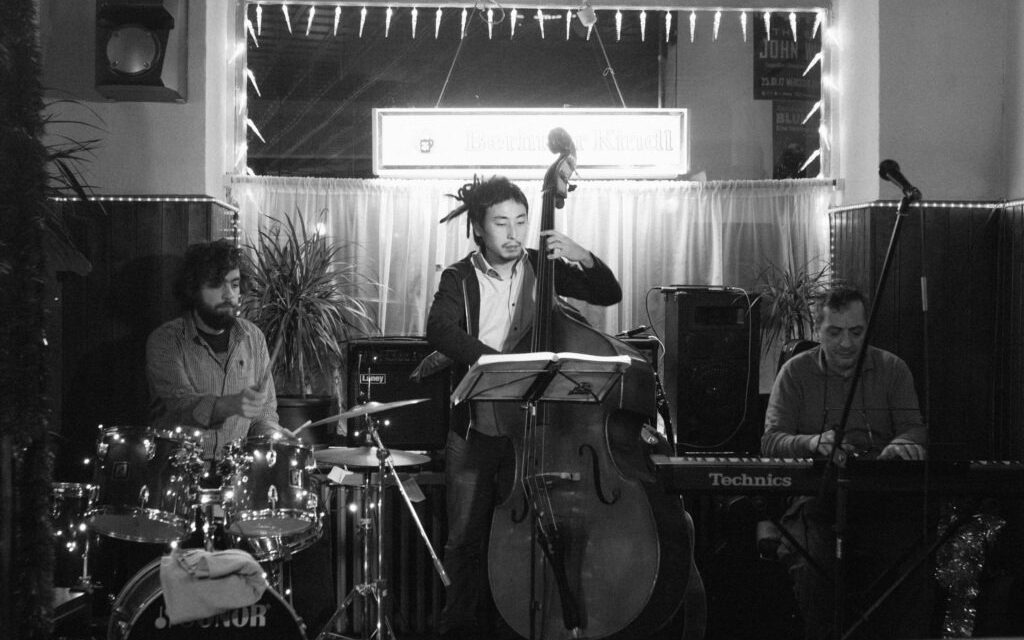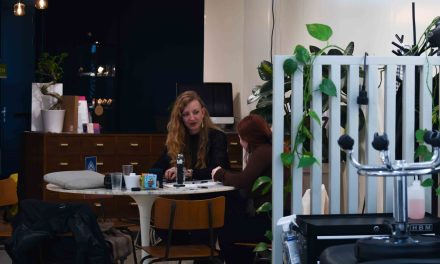Xenia Chitoroagă and Nat Murray, Utrecht
In the midst of Berlin’s renowned and famous techno scene, an often overlooked cultural force thrives: jazz. More than a musical genre, jazz has become a movement that fosters social inclusion and celebrates diversity. So, as a source that brings people from all walks of life together to celebrate their shared love of music, what dimensions has jazz addressed, and in what direction is it heading?
Berlin’s rich cultural scene is like a canvas for the thriving jazz community, which promotes an inclusive and creative environment. One of the places that regularly hosts jam sessions that bring together musicians from various backgrounds to collaborate and create revolutionary music is The Jazzkeller 69 Club. Moreover, the Berlin Jazz Festival, organized every year also features a diverse lineup of musicians from around the world, who gather to fascinate the audience with various musical styles and cultural backgrounds. A highlight of this musical and cultural environment is the use of jazz as a connection to the concepts of individuality, authenticity, and personal identity. In fact, until this day jazz has been, and still is, tremendously linked to inner self-expression and identity holding influence in a number of dimensions, such as sexual orientation, gender, age, ability, and ethnicity. The enduring link between jazz and inner self-expression showcases how the genre has transcended its musical boundaries to become a form of personal and cultural empowerment.
Jazz’s history is deeply connected and influenced by the city’s resilience during WWI and WW2. When the Weimar Republic was reigning over the country in the 1920s, jazz made its way from the USA and challenged the musical boundaries and social norms, becoming a symbol of freedom and self-expression. However, due to the economic downfall after the First World War and the presence of black French soldiers, a great deal of racism covered the population, leading to jazz’s portrayal as a dangerous and inferior genre. This is why, in the 1930s, Nazis had their first attempts to ban jazz and close many performance venues. But even then, those who wanted to go against fascist, xenophobic, racist, and communist values and ideas, would use jazz as a weapon that would promote democracy.
Therefore, nowadays, regarding ethnicity, the probability of stumbling upon a really mixed jazz group, that experiments with different techniques, and sounds, is quite high. The musicians participating in the Tuesday night jam sessions are a clear example of the latter. Yet, music theory lecturer and vice president of the Berlin University of Arts Ariane Jeßulat adds: “The jazz scene in Berlin is very complicated. It could seem diverse, but I’m not sure how diverse it actually is. A lot of white people would cover black people’s songs, or integrate them to gain more money. But nowadays I’m completely sure there are more people of color playing jazz, they are more noticeable.”
The LGBTQ+ collective and Berlin’s contemporary jazz scene are closely related since they both value acceptance, self-expression, and the celebration of variety. Since its rise, jazz was and continues to be a natural ally for the LGBTQ+ community, because it advocates for inclusion and democracy, where everyone has the right to feel welcomed and respected, despite their background. On the one hand, Queer Cheer is a young Berlin-based group connected to the jazz scene which has the mission of building a queer community, unified through jazz music. Moreover, bands like QueerPack prove that having a diverse team contributes greatly to creativity and the exchange of ideas, while bars like Donau 115 play a tremendous role in contributing to queer diversity, by organizing LGBTQ+-friendly events. Nevertheless, on the other hand, despite the actions taken to include queer people, they still might struggle to enjoy the same opportunities as heterosexual individuals. The marginalization is persistent, especially in older groups and audiences.
Regarding gender, this dimension in jazz is becoming more accepting towards female artists: according to research done by the German Jazz Union, in comparison to 2016, in 2022 there was a significant increase in the number of instrumentalist women in jazz bands. In the same way, women took pride in creating all-female ensembles, like the Berlin Swing Band, consisting of 6 women, performing jazz classics from the 20s to 50s. Even so, special female solo artist guests can also be found in events organized in different locations, like A-Tranne and Bar Bobu for their jazz jam sessions which promote diversity not only in terms of gender, but also in nationality.
However, on the contrary, women still face a number of gender-related issues as musicians in the Jazz industry: these artists are more likely to teach elementary music to children, while men take professor positions in higher education. Johanna Schneider, a musician and one of the directors at the German Jazz Union mentions that there is a noticeable pay gap, one of the reasons women still being mostly singers or band leaders: “Women also don’t have that many possibilities to show their music, to show their art, so it’s important to put a spotlight on that, and this is what I also do. I’m organizing a festival with 6 colleagues to put the spotlight, especially on female instrumentalists.”
In terms of age, the jazz scene is very diverse and depends on the circumstances and personal interests. Sometimes younger people might face issues due to certain biases in an address to their age, as youth is associated with a lack of knowledge and experience. Professor Ariane Jeßulat reckons: “If you are driven by passion, there might be more young aged people. If it’s contemporary, you can see grandmas and children playing together. However, if you have bands playing standards, it’s more established that the players are rather old.” Even so, most bands are open to incorporating and supporting young artists, as long as they showcase skill, dedication, and mastery: Wanubale is a set of 9 young jazz performers, that combines jazz with funk and dub elements. Their energy, skill, and creativity were awarded in 2018 with the German Sparda Jazz Award with jazz legend Klaus Doldinger as a member of the jury.
Jazz has also an important role in establishing diversity and inclusion for the physically and mentally disabled people in Berlin. The JazzFusion band and other musical groups have shown that having a disability shouldn’t prevent someone from being a good musician. However, access to music education and training may present a number of barriers for disabled artists, which may limit their ability to gain the skills required for the jazz profession. Additionally, prejudice and bias in the music industry might prevent professionals from getting the same opportunities as physically able individuals. Jazz performers may encounter challenges because the genre requires both physical endurance and mastery of advanced techniques. As a result, individuals could encounter challenges whether they want to perform jazz or work in the field. Professor Ariane Jeßulat, states that even if there are a few disabled people in the music industry, it is not a common occurrence and that creating programs specifically for the latter could be seen as a form of discrimination. However, she also expresses that there is an attempt from cultural institutions to create activities that are “diversity-based”, although they are in an initiation phase.
Zooming out, one can see the tremendous impact jazz music had on the city’s cultural and social fabric. It is proof of how music has the power and the ability to bring people closer and unite them, despite all their differences. Although challenges still exist, and changes still have to be made, jazz continues to break down cultural and social walls and create means for a more inclusive society. Efforts are being made to improve diversity and inclusion within the jazz industry; for instance, various jazz experts from the German Jazz Union claim an effort in offering necessary funding, as the lack of budget is one of the biggest impediments at the moment. Furthermore, they also claim the need for introducing minority representatives in cultural and political fields, since besides improving diversity, this will lead to “sympathetic changes” in all creative and social fields, including the jazz industry.
All in all, just like the techno scene, jazz in Berlin has worked itself into the core of the culture of the city, erasing social barriers and promoting a sense of community among its people, whether it’s through the annual Jazzfest Berlin or the jam sessions at Bar Bobu. Even though there is still work to be done in the larger music industry to encourage diversity and inclusion, Berlin’s jazz scene is a bright example of what can be accomplished when people with different stories come together to create art. So, as jazz continues to evolve in Berlin, it will undoubtedly remain an essential part of the city’s identity and a testament to the power of music to unite us all.




